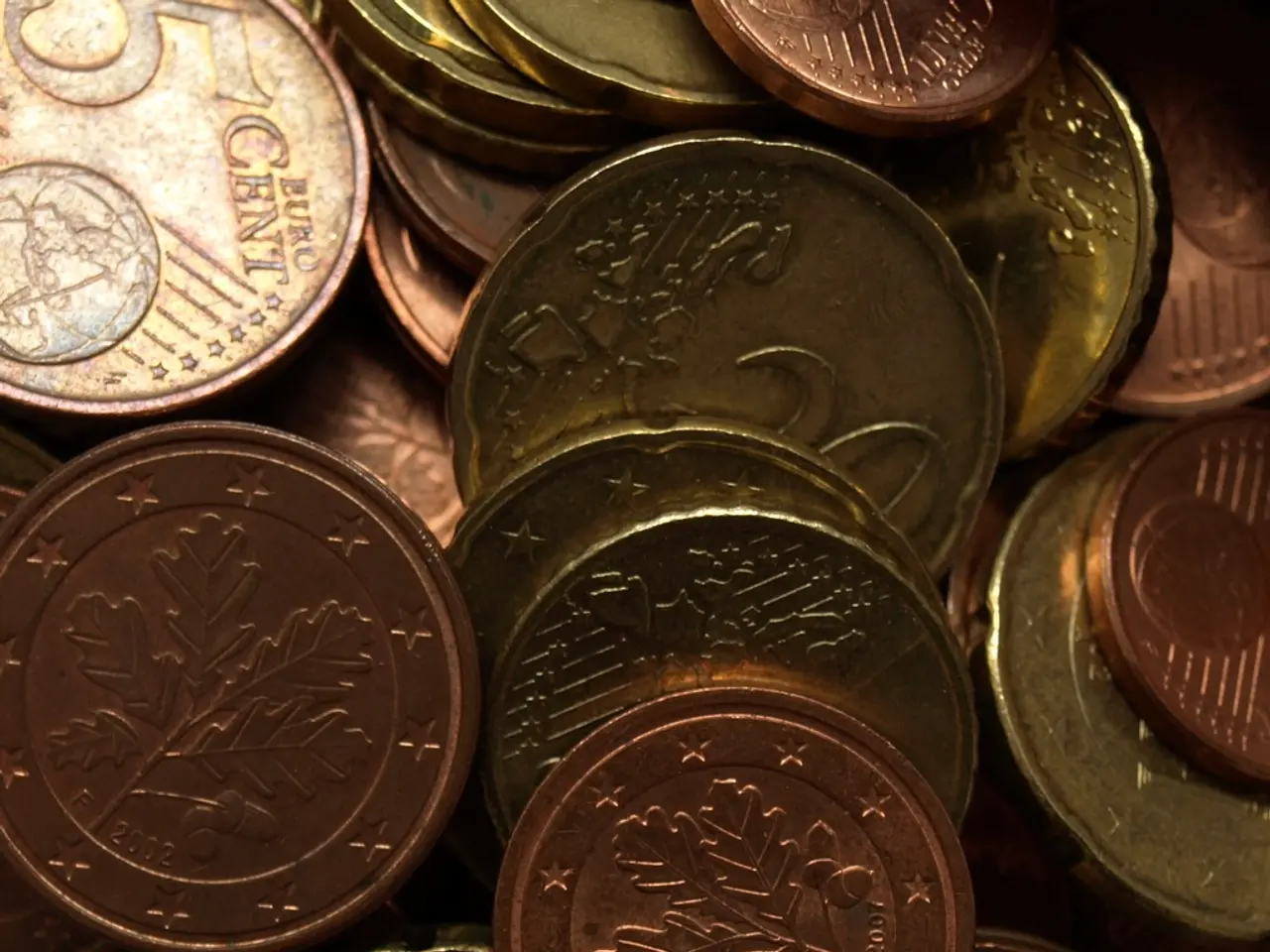Policy adjustments for a minimal inflation environment
The Reserve Bank of India (RBI) has decided to maintain its policy rate in August 2025, marking a pause in interest rate changes. This decision comes amidst global economic uncertainties and soft domestic inflation.
Inflation, a significant factor impacting economic growth, has been a concern due to the possibility of being too high. However, in India, about half of the inflation basket is food, which is less affected by global trade uncertainties, and non-tradeable components also shield inflation from direct external shocks.
The RBI's decision to pause rate changes is a strategic move aimed at balancing growth and inflation risks. The central bank has noted a decline in inflation expectations to around 3.1% and steady growth projections at 6.5%. This "optionality" allows the RBI to adjust policy in the future based on how global tariff regimes and U.S. policies evolve.
Credit growth in India remains subdued due to global uncertainties and cautious domestic conditions. However, support from rural demand, a normal monsoon, and public capital expenditure is sustaining the economy for now. The ongoing trade tensions and tariff policies in the U.S., with tariffs reportedly at 25% on all exports, pose risks that could hamper India’s GDP growth and credit expansion if prolonged or intensified.
The RBI has suggested several measures to stimulate credit growth, including the implementation of the Grameen Credit Score, digital initiatives for credit delivery to Micro, Small and Medium Enterprises (MSMEs), and the use of Central Bank Digital Currency (CBDC) for credit disbursement.
Small firms and exporters, in particular, require an extension of the credit cycle rather than fresh credit in the current scenario. The ongoing tariff policy changes are causing rejig of business decisions and stalling export credit growth.
The April monetary policy adopted a 'dovish' tone and a 'neutral' stance, signalling a pause in rate cuts. The RBI Monetary Policy Committee is meeting with financial markets and businesses anticipating a rate cut. However, a further weakening of the rupee cannot be ruled out due to the blanket 25% tariff imposed by the US and the not-too-discrete criticism of India-Russia trade relations by the US President.
In conclusion, inflation driven by tariffs and global uncertainties dampens global economic growth and complicates central bank decisions. For India, despite limited direct impact on inflation due to its consumption patterns, the RBI MPC has adopted a cautious pause on rate changes to balance growth and inflation risks while monitoring evolving U.S. tariff policies and their indirect effects on India’s economic and credit conditions.
- The RBI's policy of maintaining the policy rate, despite global economic uncertainties, is a strategy to balance growth and inflation risks in India's business and finance domain.
- Most of India's inflation, however, comes from food and non-tradeable components, making it less vulnerable to external shocks caused by global trade and tariff policies.
- The decline in inflation expectations and steady growth projections provide the RBI with "optionality" to adjust its policy according to future developments in global tariff regimes and US policies.
- Despite subdued credit growth due to global uncertainties and cautious domestic conditions, the RBI is recommending measures like the Grameen Credit Score, digital initiatives, and Central Bank Digital Currency (CBDC) to stimulate credit growth in India.
- Small firms and exporters in India are facing challenges due to ongoing trade tensions and tariff policies in the US, which could potentially hamper GDP growth and credit expansion in the future.
- While the RBI's April monetary policy signaled a pause in rate cuts, the ongoing tariff policy changes and criticisms of trade relations by the US President could potentially result in further weakening of the Indian rupee against the US dollar.




